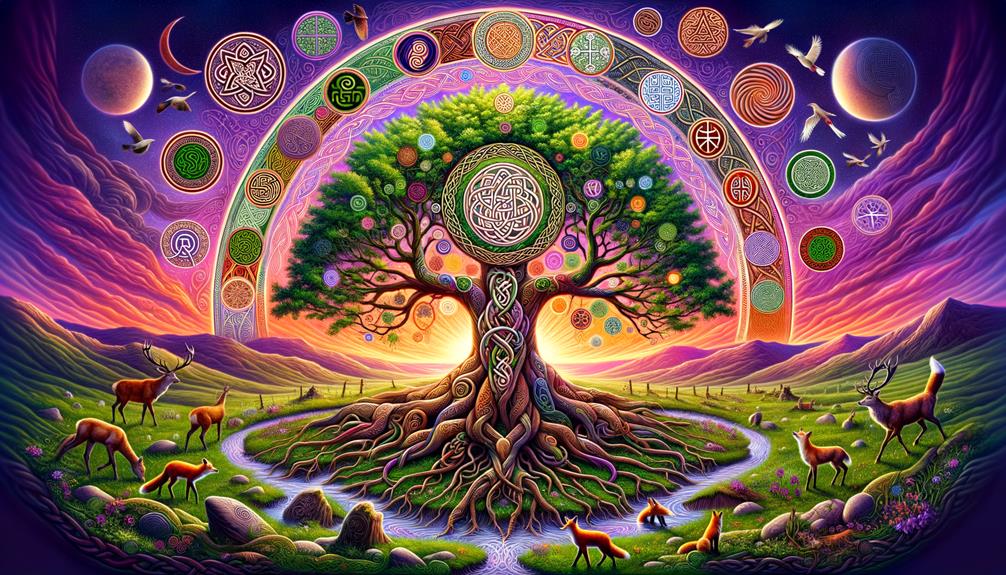Studying Celtic culture, I've found their Tree of Life to be a significant representation of their deep respect for nature. This symbol stands for balance, harmony, and interconnectedness. The Celts thought of it as a spiritual dwelling for their ancestors, bridging the gap between the physical and celestial realms. The cycle of leaves falling off and growing back is seen as a reflection of the constant ebb and flow of life. It's fascinating to see how the Celts' understanding and relationship with nature continues to influence our modern culture, as seen in art and spiritual discussions today. There's definitely a lot more to learn about this topic.
Understanding Celtic Culture
If you want to get a real sense of Celtic culture, you'll soon realize the importance of the Celtic Tree of Life. It's not just about the practical reliance on trees, but also a deep spiritual bond with the natural world. This holy tree, a key symbol for Celtic communities, stands for balance, harmony, and the idea that everything is connected – fundamental concepts in their way of life. The spiritual value they place on the tree comes from the belief that it was home to the spirits of their ancestors, serving as a bridge between the sky and the earth. The roots and branches illustrate this relationship, with roots digging into the earth for wisdom and branches reaching up to the sky for enlightenment. This connection between the heavens and earth illustrates a balanced life, which resonates strongly within the Celtic mindset.
Ancient Celtic Tree Symbolism
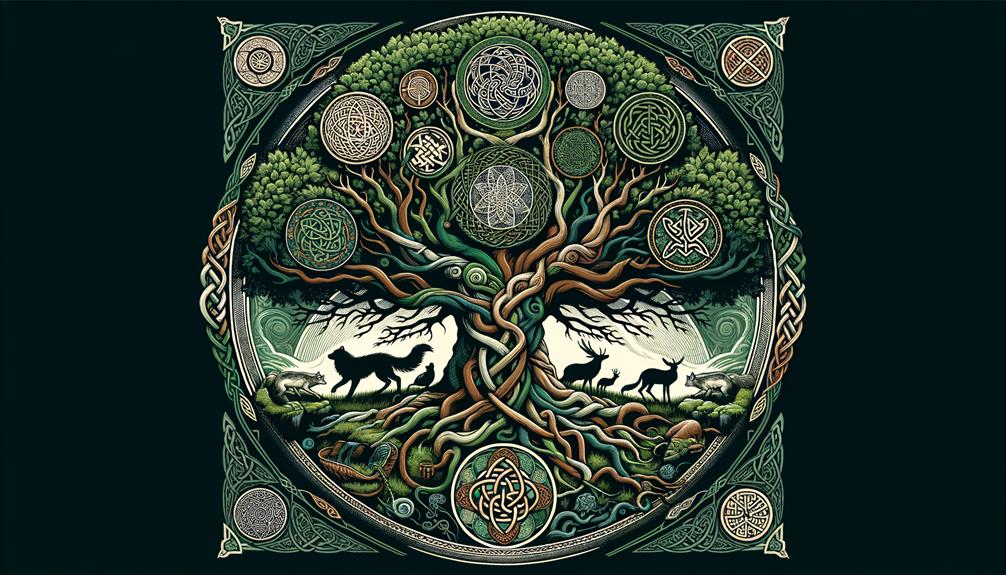
When we delve into the ancient Celtic symbolism associated with trees, we find that the Tree of Life, or Crann Bethadh as it's known in Irish, held a significant place in their culture. This revered tree was seen as a symbol of balance, interconnectedness, and harmony. The Celts had a deep admiration for nature, and the Tree of Life embodied this sentiment. It was seen as a source of wisdom and strength.
It was common for the Celts to plant a Tree of Life in every settlement. This wasn't just a random act – they believed that this sacred tree acted as a bridge between the earthly and heavenly realms. They held the tree in such high regard that cutting one down was viewed as a serious offence.
The Celts also found symbolism in the tree's cycle of shedding leaves and regrowing them. This was seen as a reflection of the perpetual cycle of life, further amplifying the tree's symbolic importance. It's clear that the Celtic Tree of Life, or Crann Bethadh, carries a deep message about the Celtic people's profound reverence for nature.
Historical Context of the Tree of Life
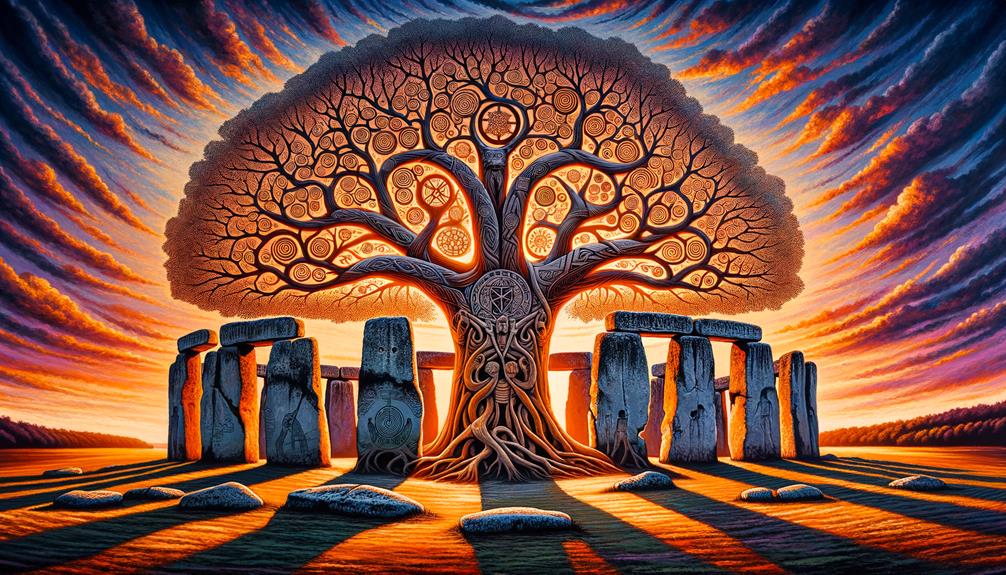
To get a feel for the history of the Tree of Life, let's set our imaginary time machine back to the era of the early Celtic tribes. These folks had a deep appreciation for nature, particularly trees, and this played a significant role in their everyday life and rituals.
The Celts were in awe of trees, the oak tree being a standout favourite. They saw trees as something beyond mere plants. To them, trees were sacred, holding a special place in their worldview. The Celtic Tree of Life was especially cherished. It was seen as a spiritual link to their ancestors and a symbol of life's interconnectedness.
And it wasn't all abstract thought. This belief took physical shape in the form of the Silver Celtic Tree, which was a tangible embodiment of the Irish Trinity Tree of Life. So, the Celts didn't just see trees as sources of wood or food. They saw them as profound symbols that helped shape their understanding of the world and their role in it.
Interpretation of Celtic Knots
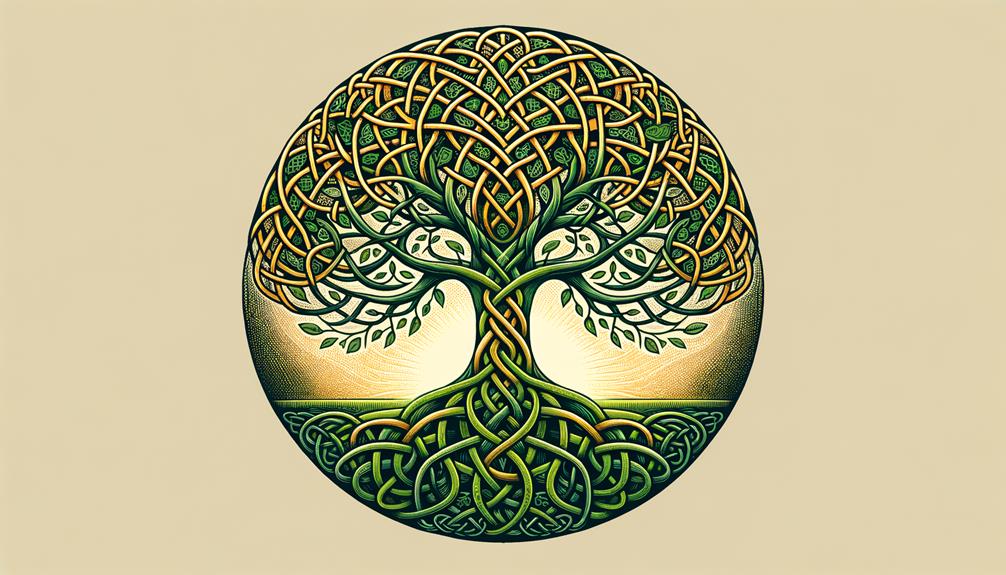
When you really get down to it, Celtic knots aren't just pretty decorations. They hold a world of meaning, deeply rooted in the ancient Celtic way of life.
- Eternity: See those endless loops? They're all about the never-ending cycle of life and death.
- Love and Loyalty: Some knots, like the Lover's Knot, are all about the power of undying emotions.
- Nature: The interwoven lines reflect how everything in nature is interconnected and just how complex life can be.
- Modern Jewelry: Celtic knots are still around today, popping up in modern jewelry. This just goes to show how timeless they really are.
Tree of Life in Modern Times

Isn't it just marvelous how the Celtic Tree of Life has seamlessly transitioned into the present day, keeping its relevance in our current culture? This enduring emblem has popped up in many modern art forms such as jewelry, tattoos, and even home decor, proving our timeless bond with nature and spirituality. As we delve a little deeper, we'll see that the importance of this symbol isn't just confined to its Irish or Celtic origins. It has stirred and motivated various spiritual and religious communities all over the globe.
Symbolism in Contemporary Culture
The Celtic Tree of Life still holds its weight in the modern world, popping up in Celtic-themed jewelry, tattoos, and art as an expression of Irish and Celtic identity. Its impact in today's culture is rich and varied:
- It's frequently used in modern Celtic-inspired creations, adding a touch of cultural history to the designs.
- For those into spirituality, it's seen as a powerful symbol of life's endless cycle of birth, death, and rebirth.
- The Tree of Life's strong ties to nature and spirituality strike a chord with current perspectives on these themes.
- It serves as a potent reminder of the enduring relationship between the Celtic people and their natural surroundings, highlighting the importance of their old-age wisdom in the world we live in today.
Influence on Modern Art
You can see the Celtic Tree of Life's impact all over modern art. Artists today often incorporate this symbol into their work, and it's not hard to see why. This symbol carries a deep, timeless allure that artists and audiences find irresistible. You can find the Celtic Tree of Life showing up in various forms. From detailed jewelry to eye-catching design elements, its depiction is as varied as it is interesting.
I've seen this symbol pop up in various forms of art, including paintings and even sculptures. It's a clear sign that the Celtic Tree of Life is still very much in style. The symbol's close ties to nature and life's continuous cycle seem to strike a chord with people. I reckon it's the deep meanings behind it that give it such a timeless charm.
Artists today do a great job of taking these meanings and blending them seamlessly into their work. This is what keeps the Celtic Tree of Life relevant in our modern times.
Symbolic Jewelry and Artifacts
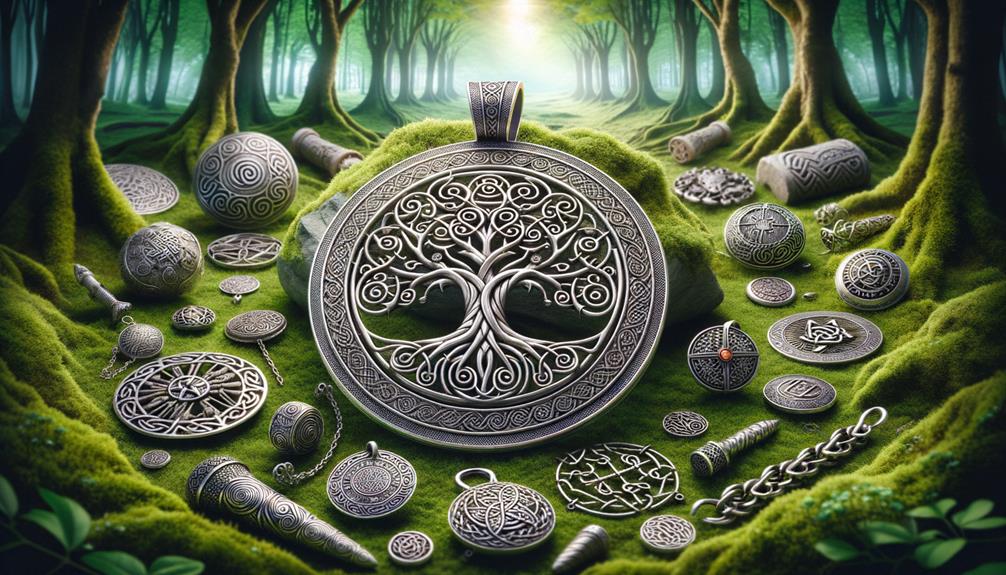
Dive into the rich world of Celtic mythology with symbolic jewelry and artifacts. Take for instance the Connemara Marble Sterling Silver Pendant and Silver Tree of Life Earrings with Malachite stones. These pieces strongly reflect the powerful symbolism of the Celtic Tree of Life, a symbol tied to concepts of rebirth, eternal life, and Irish ancestry. The Celts held a belief that trees, more so the mystical tree, bridge the spiritual and physical realms. This life cycle is often portrayed in ancient Celtic symbols like the Tree of Life pendant. For those keen to learn more, here are some Irish jewelry pieces you might want to check out:
- Connemara Marble Sterling Silver Pendant: This piece stands as a testament to Irish heritage.
- Silver Tree of Life Earrings: They're symbolic of the concept of eternal life.
- Trinity Tree of Life Pendant: This embodies the sense of unity and interconnectedness.
- Irish Crystal Tree Of Life Earrings: These showcase the intricate beauty of Celtic symbols.
Remember to keep your language simple and relevant, steering clear of overused phrases. Transition words should be used sparingly for a more natural flow in your writing. Don't resort to exaggerations; stick to facts and provide evidence where necessary. Always keep your audience in mind and opt for an active voice for clarity. Instead of just stating that something is 'important', explain why it's significant to make the content more engaging.
Frequently Asked Questions
What Does the Celtic Tree of Life Symbolize?
The Celtic Tree of Life is a meaningful symbol that carries a lot of weight. It's a symbol that suggests life has a recurring pattern, much like the changing seasons. It's also about balance and harmony, and it's seen as a connection point between our everyday lives and something much bigger. The symbol itself carries a message of wisdom and strength, as well as an overall positive vibe. The intricate design of the tree, woven together like a complex puzzle, represents how everything in life is connected.
What Is the Tree of Life Symbolic Of?
From what I can gather, the Tree of Life is a powerful symbol that bridges the gap between the celestial and earthly realms, linking mind and body. It's like a spiritual portal, standing for wisdom, strength, and the unending cycle of existence.
What Is the Difference Between Yggdrasil and the Celtic Tree of Life?
You see, the key difference between Yggdrasil and the Celtic Tree of Life actually comes down to their unique cultural roots. Yggdrasil is a concept drawn from Norse mythology, symbolizing the universe, while the Celtic Tree of Life represents the interconnected nature of all things and the never-ending cycle of existence, a true reflection of Celtic philosophies and principles.
What Do Celtic Plants Symbolize?
In Celtic traditions, the symbolism of plants is quite profound. They're often seen as powerful symbols of strength and wisdom, embodying the essence of harmony and balance. Moreover, they're thought to act as spiritual bridges, drawing us closer to our ancestors and the mystical realm beyond our everyday world.

